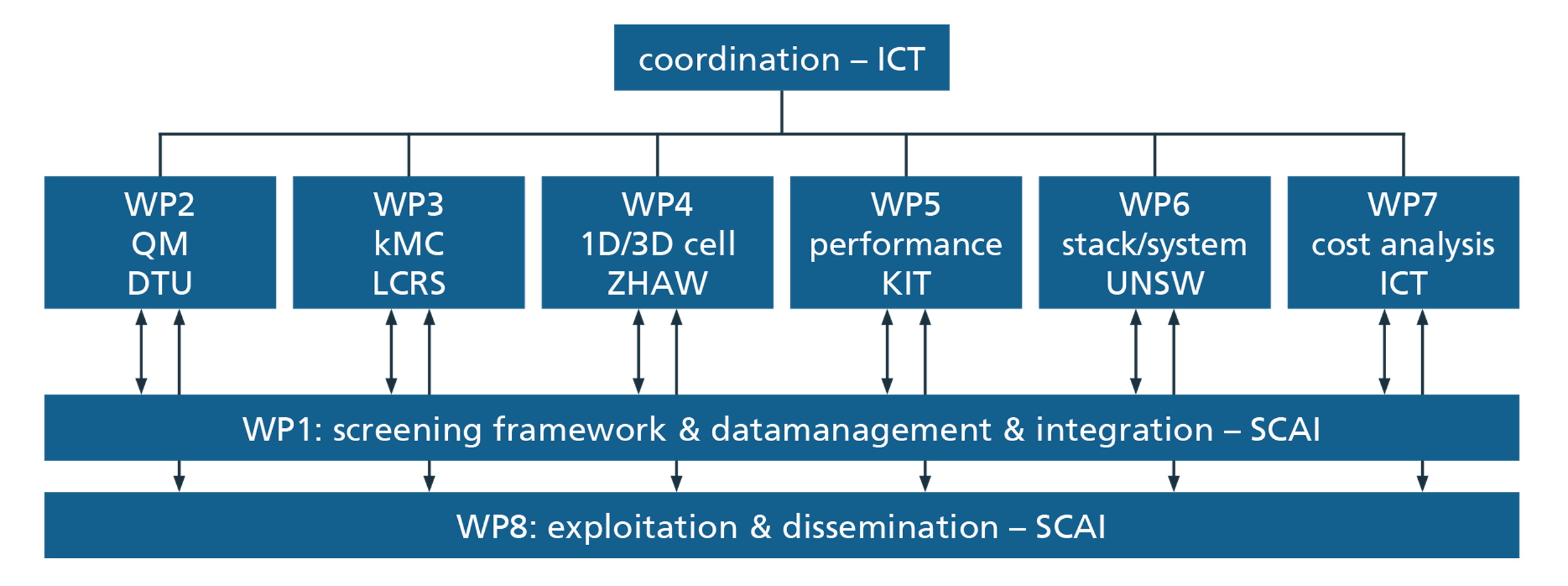WP1 will develop and provide the framework for high-volume pre-selection, multiscale modelling workflows, data integration, efficient surrogate models, design optimisation and also inverse design (top-down design approaches).
WP2 will develop atomistic-level modelling methods for characterization of molecules for RFB applications and of interfaces (thus bridging atomistic and mesoscopic simulation scales, as well as bridging electronic structure calculations and data-driven surrogate models for efficient screening).
WP3 will develop mesoscale kinetic Monte Carlo (kMC) model for the characterization of the electrochemical kinetics at the substrate/electrolyte interface and the development of a hybrid approach to link with the continuum scale (WP4). This includes the study of reactions and aging mechanisms at the electrochemical interface and its impact on the RFB performance.
The main output of WP4 will be continuum scale models for the cell. This contains a one-dimensional single cell performance model including membrane transport, a multicomponent diffusion layer model with a reduced electrochemical double layer formulation, an upscaling of a symmetric unit cell electrode model and a one-dimensional performance model for material screening.
WP5 will cover the development of pore scale resolved continuum models of the cell performance and the optimization of the flow cell design. This in particular involves the computer aided generation of 3D geometries for simulation and its optimization.
The main objective of WP6 is the development of stack and system level models to determine overall system performance for various redox couples.
WP7 will cover the development of techno-economic models and their integration in micro-grid modelling software to predict the overall cost. Also the models to support high-throughput screening will be developed. Note here, that the framework developed in WP1 integrates the hierarchy of models in WP2-7 in a holistic workflow. Note further, that all WP1-7 in particular include the objective to validate the newly developed models and workflows with examples of known chemistry.
WP8 concerns the dissemination and exploitation of the main output of the SONAR project.
Besides the IPR protection and the exploitation of the newly developed models and the holistic multi-scale modelling screening workflow, WP8 will also ensure that the results be made available via the European Materials Modelling Marketplaces. Finally, WP9 will cover the overall administrative coordination and organization of the work, to ensure to successfully accomplish all tasks and to comply with EU funding rules.
 Modelling for the search for new active materials for redox flow batteries
Modelling for the search for new active materials for redox flow batteries